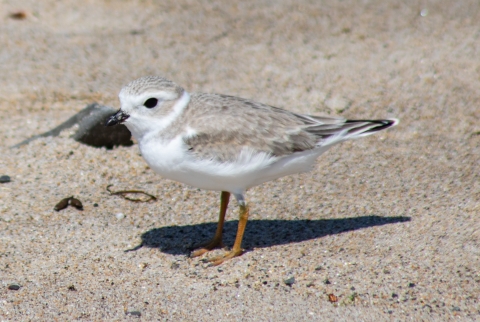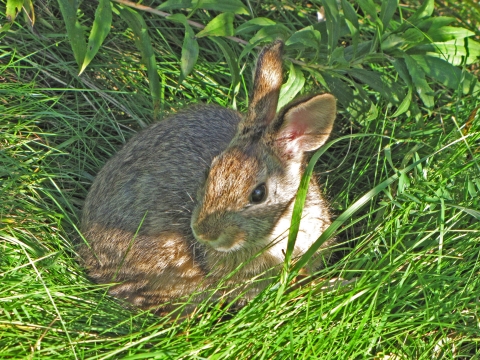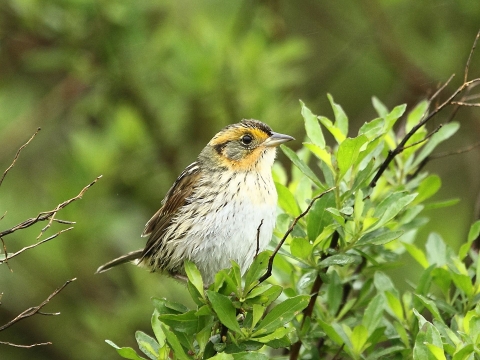Seasons of Wildlife
Southern coastal Maine is a migrating and staging area for many species of shorebirds that breed in North America, particularly during fall migration. Thousands of shorebirds feed along coastal beaches and mud flats as they migrate through the state. Most of the use by shorebirds occurs during fall migration, beginning in early July and continuing through early November in a variety of refuge habitats within the estuarine community. The greatest use occurs in tidal mudflats and salt pannes. Areas on the refuge used by shorebirds during major fall migrations include the Webhannet River at low tide, several salt pannes on the lower Wells and Upper Wells divisions, and the Batson River and Goose Rocks tidal mudflats. The Biddeford Pool Division serves as one of the top shorebird staging areas in Southern Maine. The great diversity of shorebirds found in those areas compares to only a few other sites in Maine.
Featured Species
- Saltmarsh sparrow (Ammodramus caudacutus)
- New England Cottontail (Sylvilagus transitionalis)
- Least tern (Sterna antillarum)
- Piping Plover (Charadrius melodus)
Rachel Carson National Wildlife Refuge was established to protect valuable salt marshes and estuaries for migratory birds. The proximity of the refuge to the coast and its location between the eastern deciduous forest and the boreal forest creates a composition of plants and animals not found elsewhere in Maine. Major habitat types present on the refuge include forested upland, barrier beach/dune, coastal meadows, tidal salt marsh salt marsh
Salt marshes are found in tidal areas near the coast, where freshwater mixes with saltwater.
Learn more about salt marsh , and the distinctive rocky coast.
The piping plover (Charadrius melodus), a beach-nesting shorebird, is federally threatened and state endangered in Maine. Fifty to 75% of the Maine piping plover population nests at sites on or near the refuge, including beaches in Kennebunk, Goosefare Brook, and Marshall Point at Goose Rocks. Visitors are likely to see piping plovers from May through August on many beaches near the refuge.
The species of rabbit found in Maine is the New England cottontail (Sylvilagus transitionalis), which is different from the Eastern cottontail. Cottontails thrive in early successional habitat that was relatively abundant in the early to mid-20th century. As farms were abandoned, the species did very well. Subsequently, increased development and reforestation has led to a population decline as this type of habitat became increasingly rare.
Rachel Carson National Wildlife Refuge prohibited rabbit hunting as of 1998 due to ongoing population declines. The US Fish and Wildlife Service was petitioned in 2000 to list the New England cottontail under the Endangered Species Act. Currently, New England Cottontail are listed as a candidate species under the Endangered Species Act and is listed as endangered in Maine. Because they are so rare, it is unlikely that visitors will see these rabbits.
In 1995, sharp-tailed sparrows were divided into two separate species: the Nelson’s sparrow and the saltmarsh sparrow. Saltmarsh sparrows (Ammodramus caudacutus) are found in salt marshes along the Atlantic coast from the Delmarva Peninsula north to southern Maine. Within the refuge, both species are found only on salt marshes. In fact, the saltmarsh sparrow is an obligate salt marsh species that spends its entire life cycle on salt marshes. Visitors are likely to see these sparrows during the summer months on the refuge salt marshes.






